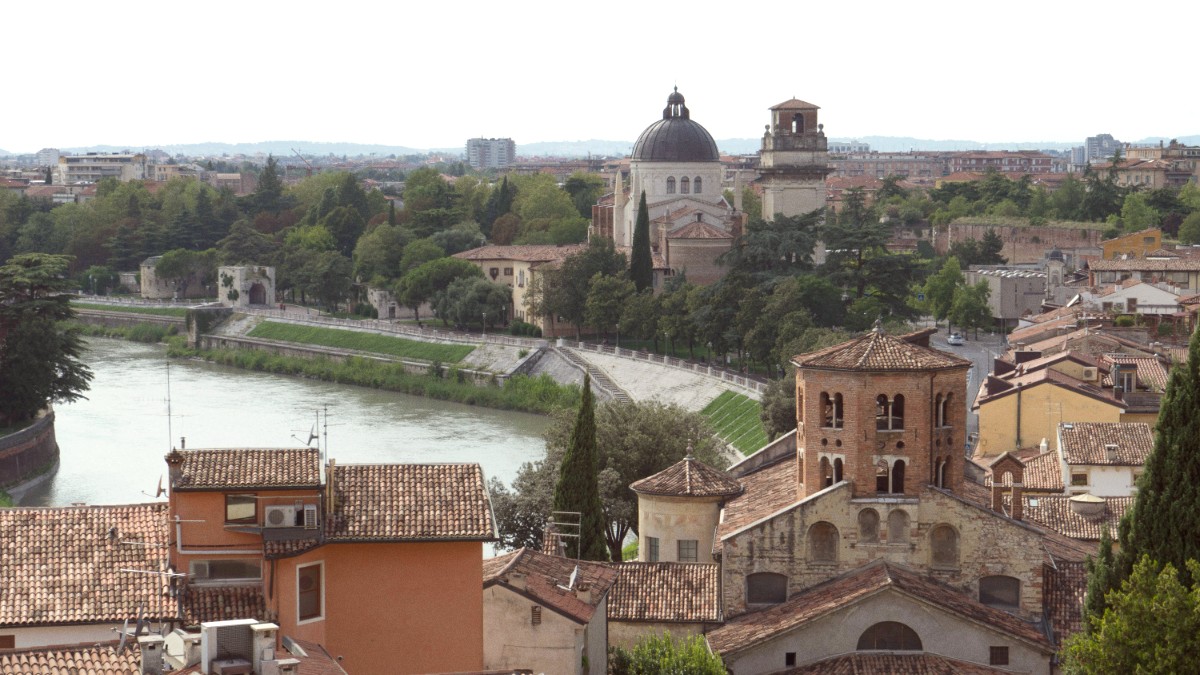
The Veneto, Italy
Verona does not have a metro or tram system. The main public transport is an extensive bus network operated by ATV (Azienda Trasporti Verona). This bus network includes both urban and suburban lines. It connects the city center with surrounding neighborhoods, the train station, and extends to Lake Garda towns and other regional destinations.
Buses generally operate from early morning (around 5:30 AM) until late evening (around 8:30 PM for many lines, with some extending until midnight). Frequency varies: main routes see buses every 10-20 minutes during peak hours, while secondary routes and weekend/holiday services are less frequent.
Newer ATV buses are generally low-floor and equipped with ramps for wheelchair access. However, some older buses may still be in service. The cobblestone streets in the historic center can pose challenges for mobility.
Purchase tickets in advance from a Tabaccheria or Edicola to save money and time. Use Google Maps or the Moovit app for real-time bus schedules and routes. Validate your ticket immediately upon boarding the bus by inserting it into the machine. Failure to validate can result in fines.
White cars with a "TAXI" sign on the roof and a visible taxi meter inside.
Taxis cannot be hailed on the street. Find them at designated taxi stands (Piazza Bra, Porta Nuova train station, Piazza delle Erbe) or call +39 045 532666 for Radio Taxi Verona.
Fares are metered. Train station to city center ~€10-€15. Airport to city center ~€20-€30. Surcharges for night service, holidays, luggage, and calling a taxi.
Uber operates Uber Black (private hire, more expensive). Services like UberX or Lyft are not widely available. "itTaxi" is a popular app for booking traditional taxis.
For greater flexibility in exploring Verona and its surroundings, consider renting a car, motorcycle, scooter, or bicycle.
Verona's historic center is largely pedestrianized or has limited traffic due to ZTLs. Most major attractions are within easy walking distance. Enjoy scenic walks along the Adige River.
Numerous tour operators have historical, culinary, and themed walking tours (e.g., Shakespeare's Verona). Self-guided exploration is easy with readily available maps and well-signposted attractions.
Verona has a growing network of bicycle lanes, especially along the river and connecting to suburban areas. Helmets are not mandatory for adults but remain recommended. There are no specific "no-go" areas for pedestrians or cyclists.
Verona offers a few unique transportation options that elevate sightseeing and accessibility.
Explore Verona's compact center on foot to discover hidden gems and reduce your carbon footprint.
Eco-Friendly
Utilize the ATV bus network for longer distances, a more sustainable option than taxis.
Efficient
Enjoy Verona and nearby areas on two wheels for a green and active experience.
Active Green
Verona's compact size and pedestrian-friendly areas make walking and cycling excellent ways to explore the city.
For exploring beyond, train connections are efficient, or car rentals present flexibility, but be aware of ZTLs.